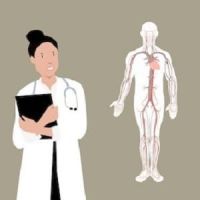The work environment of a radiologist consists of working closely with medical students, residents, fellows and ancillary staff, in addition to spending long periods of time in a small space with other radiologists. It is therefore necessary for radiologists to work well together or as a team.
It's worth noting that teams are more about personality rather than skill. Radiologists need to be aware of the interplay of different personalities in the reading room, and each personality has different character traits, motivations and skills. Understanding your colleagues’ personality can help with better and effective team work and leads to less dissatisfaction or unhappiness between colleagues.
No personality is good or bad, but each personality can have different functions. This can be useful in radiology, from the day-to-day interaction between radiologists to managing a section or department. One prominent personality assessment test is the Myers-Briggs Type Indicator (MBTI), which is based on the theories of Carl Jung. According to these theories, there are four different dichotomies which the personalities are based on:
1. How one draws and directs energy: Extraversion (E) versus Introversion (I)
2. How one views information: Intuition (N) versus Sensing (S)
3. How one makes decisions: Thinking (T) versus Feeling (F)
4. How one organises: Judging (J) versus Perceiving (P)
Extraversion (E) versus Introversion (I)
This dichotomy describes how a person interacts with the world and how they derive and focus their energy. Extroverts derive their energy from others (social interaction) and stimulation from their environment. They are able to complete multiple tasks all at once, and switching from task to task can re-energise them. They would enjoy and thrive in situations such as tumour boards; they would also be a better point person in the reading room for clinicians.
Conversely, introverts derive their energy from themselves and small groups, with a heavy emphasis on reflection through listening and watching. They dislike having multiple tasks all at once, but they can also be great assets to the department as they can often generate great ideas due to their observant and reflective nature. They are a great point person to discuss about how processes can be improved in the department.
Intuition (N) versus Sensing (S)
Those who prefer intuition will focus on possibilities, meanings and relationships. They are the “big picture” person who often comes up with original and innovative ideas and solutions. The harder the task, the more of the challenge they see it. Hence, they are suitable for managerial and mentorship positions.
Those who prefer sensing are realistic and pragmatic. They follow logic and are very detail orientated. These colleagues will often prefer to observe others first before attempting a new skill (using a new device or system).
Having an N work with an S can be frustrating as both see the world differently. However, when one can get the two working together this can be an amazing work relationship with N coming up with innovative ideas and S implementing them in a logical and decisive way, whether it be protocols, processes or research.
Thinking (T) versus Feeling (F)
The T persons are logical and analytical, with strong problem-solving skills. When colleagues who are giving you feedback have high levels of T, you should not take it as a personal attack – what they say are sincere advice without any hidden connotations.
Those who prefer feeling are very in tune with their own and others’ emotions and emotional needs. These individuals can be described as “The Communicators” with incredibly strong people skills. They are the cheerleaders of the department and when coupled with sensing, they can motivate colleagues to accept changes. The F persons can, however, come across as sensitive. Therefore, it is important to be diplomatic when giving feedback and this has to be recognised by the feedback giver, especially if the person delivering the feedback has high levels of T.
Judging (J) versus Perceiving (P)
Those who prefer judging will stick to deadlines and rules. They prefer structure and demonstrate clear, detailed instructions and plans. They are “The Workers” who can get things done and very good at managing their own time. Without a goal, these individuals will feel lost and lose motivation.
The perceiving type tends to be flexible, good at improvising, spontaneous, and open to new ideas and attitudes. These individuals can be described as “The Innovators” and due to their particular traits have the ability to come up with new ideas and different ways of thinking. However, these individuals should work closely with other colleagues who have high levels of sensing, so they do not fall down a possible rabbit hole.
Source: Current Problems in Diagnostic Radiology
Image credit: free images.com
References:
Wang SS (2019) Understanding Personalities and Not Just Skills in Radiology. Curr Probl Diagn Radiol. Article in Press, Available online 20 February 2019. doi: https://doi.org/10.1067/j.cpradiol.2019.02.008
Latest Articles
Imaging, Communication, work environment, cross-collaboration, radiology department, image reading process, personalities, reading room
The work environment of a radiologist consists of working closely with medical students, residents, fellows and ancillary staff, in addition to spending long periods of time in a small space with other radiologists. It is therefore necessary for radiologi



























